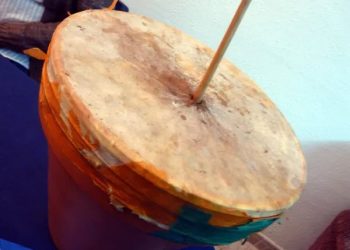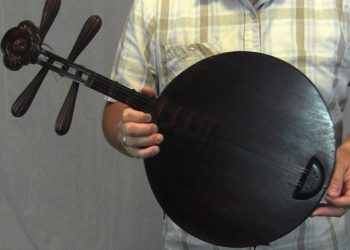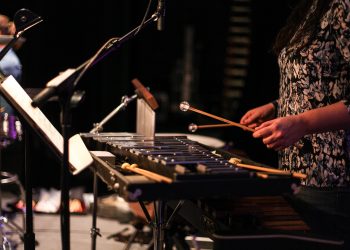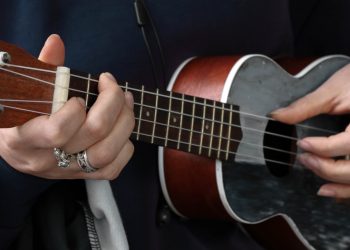Music is an art form that is enjoyed and celebrated by people all around the world. The beauty of music lies in the diversity of musical instruments that exist, each with its unique sound and playing technique. In this article, we explore the top 13 musical instruments that start with the letter H. From the haunting sounds of the harmonica to the majestic tones of the harp, the letter H offers a range of musical instruments that cater to various genres of music. Whether you are a musician or a music enthusiast, this article will provide you with a comprehensive list of musical instruments that begin with the letter H. We delve into the history and origin of each instrument, their playing techniques, and the different genres of music they are commonly associated with. Whether you are looking to expand your knowledge of music, or you are simply interested in learning about the instruments that begin with the letter H, this article is the perfect guide for you. So sit back, relax, and immerse yourself in the world of musical instruments that begin with the letter H.
1. Hachi
HACHI is an ancient Japanese instrument that has been played for centuries. It’s a lute with six strings and a body made from wood, metal or leather. The sound it produces is unique to the instrument itself – if you’ve ever heard it before, you’ll recognize it right away!
This traditional instrument dates back to the 8th century and was popularized during the Edo period. HACHI can be found in various forms today such as; koto (a horizontal stringed zither), shamisen (a three-stringed banjo) and biwa (a pear shaped four-stringed lute).
Playing this instrument requires skillful technique which involves plucking, strumming and picking of its strings. Different techniques are used depending on what type of song is being performed. For example, Koto music usually uses tremolo while Shamisen use vibrato techniques. This versatility makes hachi one of the most popular instruments among musicians all over Japan.
The sound produced by HACHI is often compared to that of a harp due to its strong yet gentle resonance. Its soothing tones evoke emotion and create an atmosphere perfect for relaxation or meditation. With its long history and rich culture behind it, HACHI continues to fascinate people around the world even today.
2. Halam
The next musical instrument we will explore is the halam. This traditional Indian stringed instrument is made from a hollow gourd body, which has four to five strings attached to it. The resonator of the instrument is usually covered with goat skin and decorated with intricate carvings for an aesthetic appeal. It’s considered one of India’s oldest instruments and has been used in various genres such as classical music, folk music, devotional songs, and more recently Bollywood films.
Playing the halam requires skillful technique that involves plucking and strumming its strings simultaneously. Different techniques are also applied depending on what kind of song is being performed; for example, classical pieces require a slower tempo while fast-paced tunes might need faster playing speed. This versatility makes it popular among musicians all over India and around the world.
The sound produced by this instrument can be described as both mellow and sweet. Its calming tones evoke emotion and transport listeners into another realm where they can experience tranquility or nostalgia. With its long history and rich culture behind it, halam continues to fascinate people even today—a testament to its timelessness.
3. Hammered Dulcimer
The next musical instrument we will explore is the hammered dulcimer. This unique stringed instrument has a trapezoidal shape and consists of metal strings stretched over wooden bridges. It’s played by striking the strings with two small mallets, producing a bright and melodic sound that resonates from its hollow body.
Hammered dulcimers are believed to have originated in Persia during the 11th century, but now they can be found all around the world as part of various genres such as classical music, folk music, jazz, and more recently pop music. The popularity of this instrument has grown significantly throughout history due to its versatility; it can easily produce different types of sounds depending on how it’s played. For instance, soft plucking creates gentle tones while firm hammering produces louder notes.
Playing the hammered dulcimer requires patience and skillful technique. Musicians need to learn proper hand placement and coordination in order to create balanced rhythms without overpowering one another. Additionally, they must also develop their own style so that each piece expresses their individual artistic flair. With enough practice, anyone can master this captivating instrument and use it to express themselves creatively or delight an audience with beautiful melodies.
Hammered dulcimers have become increasingly popular among musicians today for their unique sound and wide range of capabilities—from creating intricate pieces to accompanying live performances or recordings. With its long-standing tradition behind it, this timeless instrument continues to inspire people around the globe with its versatile nature and mesmerizing soundscape.
4. Hand Claps
Hand claps are an essential part of many musical genres, from pop to rock and even classical. They add a unique element of rhythm and expression, making them one of the most recognizable sounds in music today. Hand clapping has been around for centuries—it was used by ancient civilizations as a way to show appreciation, celebrate victories or occasions, and communicate with each other.
Today, hand clapping is still widely used in many different types of music. It’s often incorporated into vocal performances such as choruses or refrains; it can also be heard accompanying instruments like drums or guitars during live shows. No matter what type of music you’re listening to, if there’s percussion involved, chances are that someone is adding some extra flavor with their hands!
Clapping your hands requires coordination and skillful technique—each strike needs to land at exactly the right moment so that it blends perfectly with the rest of the song. Musicians may practice specific patterns or use improvisation depending on the style they’re playing. Additionally, certain techniques like syncopated rhythms and variations on tempo can help create innovative grooves while keeping things exciting and interesting for listeners.
When done correctly, hand claps can bring a powerful energy to any performance – both in terms of sound quality and audience engagement. Even when performed alone without accompaniment from other instruments or vocals, this timeless art form still has its own unique appeal – transporting us back to our ancestors who once tapped out beats on their palms thousands of years ago.
5. Handpan
Moving away from the traditional hand claps, we come to a more modern instrument: the handpan. This relatively new instrument has quickly gained popularity in recent years due to its unique sound and versatility. A handpan is made up of two metal hemispheres which are connected together with tension rods; when struck with mallets or hands, they produce an enchanting sound that blends elements of percussion and melody.
The versatile nature of the handpan makes it suitable for many genres – everything from classical music to world music can be experienced through this captivating instrument. It’s also incredibly easy to learn – anyone can achieve beautiful sounds with minimal practice! Plus, its shape allows players to experiment with different tonalities by changing their mallet angle, striking the surface at different points, or adding layers of reverberation.
In addition to being a great creative tool, handpans have become increasingly popular as a solo performance instrument too. Its soothing tones offer meditative properties which make it perfect for relaxation purposes; some even use them during yoga classes or therapy sessions! Furthermore, because it’s so lightweight and portable, you don’t need much space in order to play one – making it ideal for those who want to share their music on-the-go.
From ancient civilizations all the way through to today’s musical landscape, instruments like the handpan bring us closer together through harmony and expression. Whether using it professionally or simply enjoying its calming tunes in your own time, this remarkable invention continues to inspire creativity around the globe.
6. Hardanger Fiddle
From the modern handpan, let’s move on to an instrument with a much longer history – the Hardanger fiddle. This traditional Norwegian stringed instrument has been around for centuries and is renowned for its vibrant sound and ornate design. Its back and front are made of spruce wood while four or five strings run along the neck, producing a distinctive twang when plucked or bowed.
The beauty of this instrument lies in its unique tuning system; each string can be tuned separately depending on the desired tone. This allows players to bring out different melodies from within one tune, creating complex rhythms that blend together seamlessly. Furthermore, it enables them to create intricate layers of sound which add depth to their playing style and allow more creative freedom.
Due to its long-standing popularity in Scandinavia, many major composers have incorporated elements of the Hardanger fiddle into their works over time – most notably Edvard Grieg’s ‘Holberg Suite’ written in 1884. But despite being rooted deep in tradition, this captivating instrument continues to evolve as artists experiment with new techniques and genres. Today you will find it featured widely across multiple musical styles including jazz, classical music, and even hip hop!
In short, the Hardanger fiddle remains an integral part of Nordic culture today – uniting people through joyful tunes and stirring emotions alike. Its ancient roots provide us with a direct link to our past yet still remain relevant for contemporary musicians all over the world who continue to embrace its melodic sounds.
7. Harmonica
The harmonica is a beloved instrument around the world. It’s small size and portability make it an ideal companion for traveling musicians, while its ability to produce beautiful melodies makes it popular among all types of music enthusiasts. Its sound ranges from bright and cheerful to soulful and melancholic – perfect for expressing emotion in any genre.
This unique sounding device consists of two sets of reeds that vibrate when air passes through them. The most common type of harmonica has 10 holes with 20 notes arranged over four octaves; these can be played in various ways such as single-notes, chords, or even special techniques like ‘bending’ which alters the pitch of the note.
Known as one of the most versatile instruments out there, harmonicas have become increasingly popular over recent years due to their affordability and ease-of-use. Their distinctive tones are featured widely across genres including blues, folk, rock ‘n roll, country, jazz and even classical pieces! What’s more, they are often used to accompany other instruments too – adding texture and depth without taking away from the main melody line.
For many people this unassuming little instrument evokes feelings of nostalgia and joy – reminding us why we continue to love making music together despite our differences. Whether you’re just starting out or a seasoned pro looking to expand your repertoire – exploring the captivating sounds of the harmonica will undoubtedly bring something new to your musical journey!
8. Harmonium
Moving on from the harmonica, we come to another instrument with a long and storied history – the harmonium. This fascinating device has been used for centuries in both Western music and Indian classical traditions alike. Like its predecessor, it utilizes air passing through reeds (known as ‘stops’) to produce sound but instead of placing them directly onto the mouthpiece, they are housed inside a cabinet which gives it a fuller tone reminiscent of an organ.
Though similar in appearance to other keyboard instruments such as pianos or organs, what sets the harmonium apart is its ability to sustain notes indefinitely without any need for human intervention. It also features multiple foot pedals which can be used to control things like volume, vibrato and pitch-bend; allowing musicians to shape their performance even further.
Unlike most modern keyboards however, this instrument relies heavily on manual pumping – requiring players to continually press down on the bellows while playing in order for sound to continue uninterrupted. Despite this extra effort though, many find that using a harmonium adds a unique character and warmth to their musical pieces – making it worth the extra effort!
In addition to its use in traditional genres, today’s harmonicums are being embraced by contemporary musicians too – whether as part of live performances or recordings. Its versatility makes it perfect for artists looking to add texture and atmosphere into their work; giving them access to sounds not found anywhere else. So if you’re looking for something new and interesting then why not consider investing in your own harmonium? You won’t regret it!
9. Harp
Having discussed the harmonium, let’s now explore another classic instrument – the harp. This beautiful and timeless instrument has been around for millennia; used in both religious ceremonies as well as popular music styles like jazz and classical composition. It is characterized by its triangular shape and numerous strings which are plucked to produce a distinct ringing sound that can be heard from miles away.
Unlike the harmonium however, the harp relies on gravity rather than manual pumping in order to achieve sustained notes – making it much easier to play (especially when playing complex passages). Its unique tuning mechanism allows musicians to quickly switch between different tonalities with ease, while also providing them access to a wide range of sounds not found in any other keyboard-style instruments.
In addition to its traditional uses, today’s modern harps are being embraced by contemporary artists too – often times being incorporated into their live performances or recordings. Not only does this add an extra layer of texture and atmosphere but it also provides listeners with something truly unique; allowing them to experience something they may have never heard before!
The sheer beauty and complexity behind these instruments make them a must-have for anyone looking to broaden their musical horizons – so why not give one a try? You won’t regret it!
10. Harpsichord
The Harpsichord is a keyboard instrument that has charmed listeners for centuries. It was popularized during the Baroque period, yet its history stretches back to the Middle Ages and beyond. The harpsichord produces sound by plucking strings with small plectra made from quills or metal. This unique approach gives it an unmistakable resonance unlike any other instrument.
Unlike modern pianos, which rely on hammers striking strings, the harpsichord’s action is much lighter – allowing musicians to move quickly between notes and chords without having to worry about volume control. Furthermore, because of this light touch it can produce more subtle tones than most contemporary instruments – making it ideal for those looking to explore more delicate passages in their music.
And if you’re searching for a truly unique sound then look no further! With its wide range of timbres and nuances, the harpsichord provides endless possibilities when it comes to creating beautiful melodies. Whether you want to make something classical or modern, this versatile instrument will surely have something special waiting for you.
From Bach’s ‘Goldberg Variations’ to Radiohead’s ‘No Surprises’, the influence of the harpsichord can be heard all over today’s music landscape – proving itself as one of the most enduring musical instruments around. If you’re ready to take your compositions up a notch then why not give a try? You’ll see what makes this iconic instrument so beloved!
11. Hasapi
Another instrument that has captivated audiences for centuries is the Hasapi. This traditional stringed instrument dates back to the 16th century, originating from South American countries such as Peru and Bolivia. Its distinct sound stands out among other instruments due to its use of two strings stretched across a wooden box-like body.
Unlike modern guitars or violins which rely on metal strings, the Hasapi features animal skin or gut strings (made up of sheep intestines). These materials provide an incredibly unique tone – allowing musicians to explore a range of sounds they may not be able to achieve with more contemporary instruments.
This also makes it perfect for folk music! The Hasapi’s soft yet vibrant timbre gives it a beautiful resonance that can add depth and texture to any piece. It’s no wonder why this instrument has been used in many genres over the years – from classical compositions to even jazz songs!
The Hasapi is certainly one of those rare musical gems that will never go out of style. With its versatility, charm and timeless appeal, this amazing instrument is sure to bring some special magic into your music if you decide to give it a try!
12. Heckelphone
The Heckelphone is an instrument that has been around for decades, but it’s still a relatively unknown musical tool. It’s a type of single-reed woodwind instrument that produces a unique sound – one that can be both mellow and rich in tone. This makes the Heckelphone perfect for creating music with depth and complexity.
Unlike many other wind instruments, the Heckelphone requires air to be blown into the reed at all times while playing – something which takes some getting used to! But once you master this technique, you’ll find yourself able to produce all kinds of sounds from low bass notes to soaring high tones. Plus, its extended range allows you to explore more complex musical ideas than ever before.
Another advantage of the Heckelphone is its versatility – it can be played solo or as part of larger ensembles, allowing you to create stunning arrangements with ease. Its light weight also allows for easy portability, making it great for gigs and practice sessions alike.
If you’re looking for an instrument that will give your compositions an extra dimension of texture and nuance, then look no further than the Heckelphone! With its unique sound and range of possibilities, it’s sure to become an invaluable addition to any musician’s arsenal.
13. Highland Pipes
Highland pipes are a traditional instrument from Scotland that have been played for centuries. These bagpipes produce an unmistakable sound, with their loud drone and shrill piping tones. The Highland pipes can be used to create hauntingly beautiful melodies, as well as lively tunes for dancing.
The Highland pipes consist of three parts: the chanter, the drones, and the bag. The chanter produces melody notes when air is blown through it; the drones provide continuous background noise in specific pitches; and the bag holds the air pressure needed to make the instrument work. Playing Highland pipes takes practice – but once you get used to it, you’ll find yourself able to create some truly unique sounds!
In addition to its distinct musical capabilities, the Highland pipe’s design is also iconic – they’re typically made of wood or metal and feature intricate Celtic designs on them. This makes them visually striking instruments which will always draw attention whenever they’re played – whether at a music festival or around a campfire during a summer night in Scotland.
The sheer depth of sound, along with its portability and visual appeal all make the Highland pipes an essential part of any musician’s collection. Whether you want to play traditional Scottish songs or just explore new musical possibilities, this versatile instrument has something for everyone!









